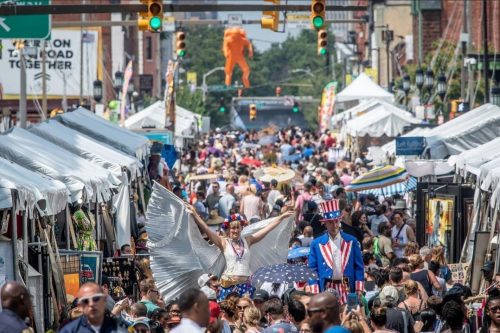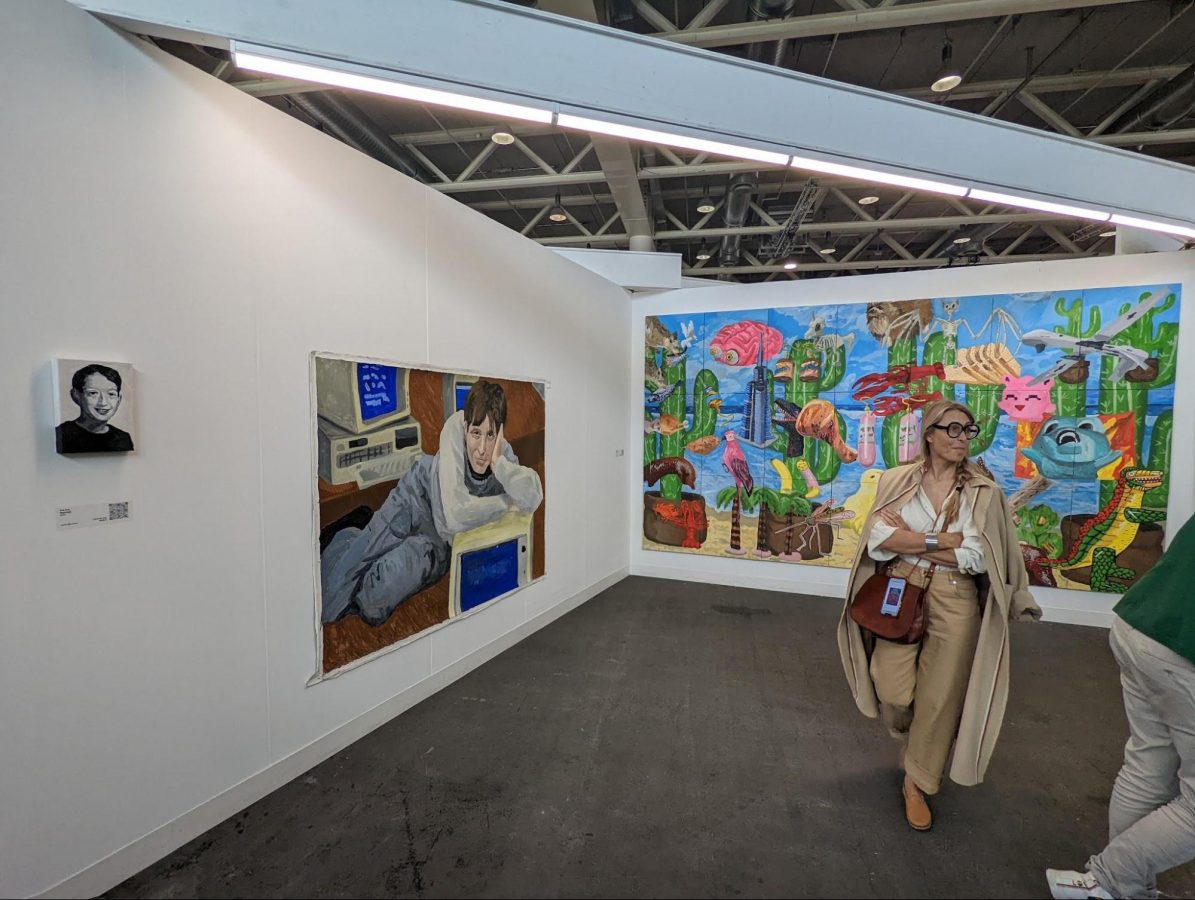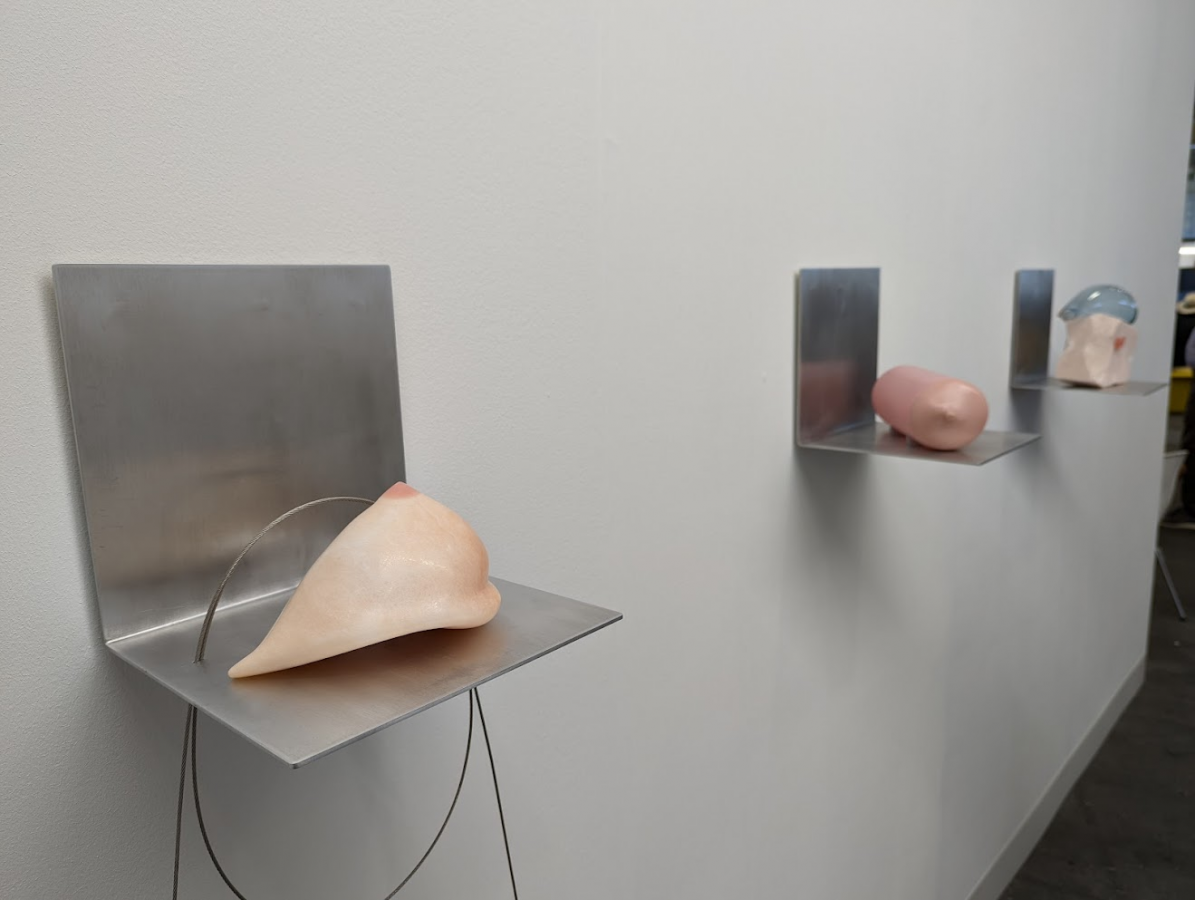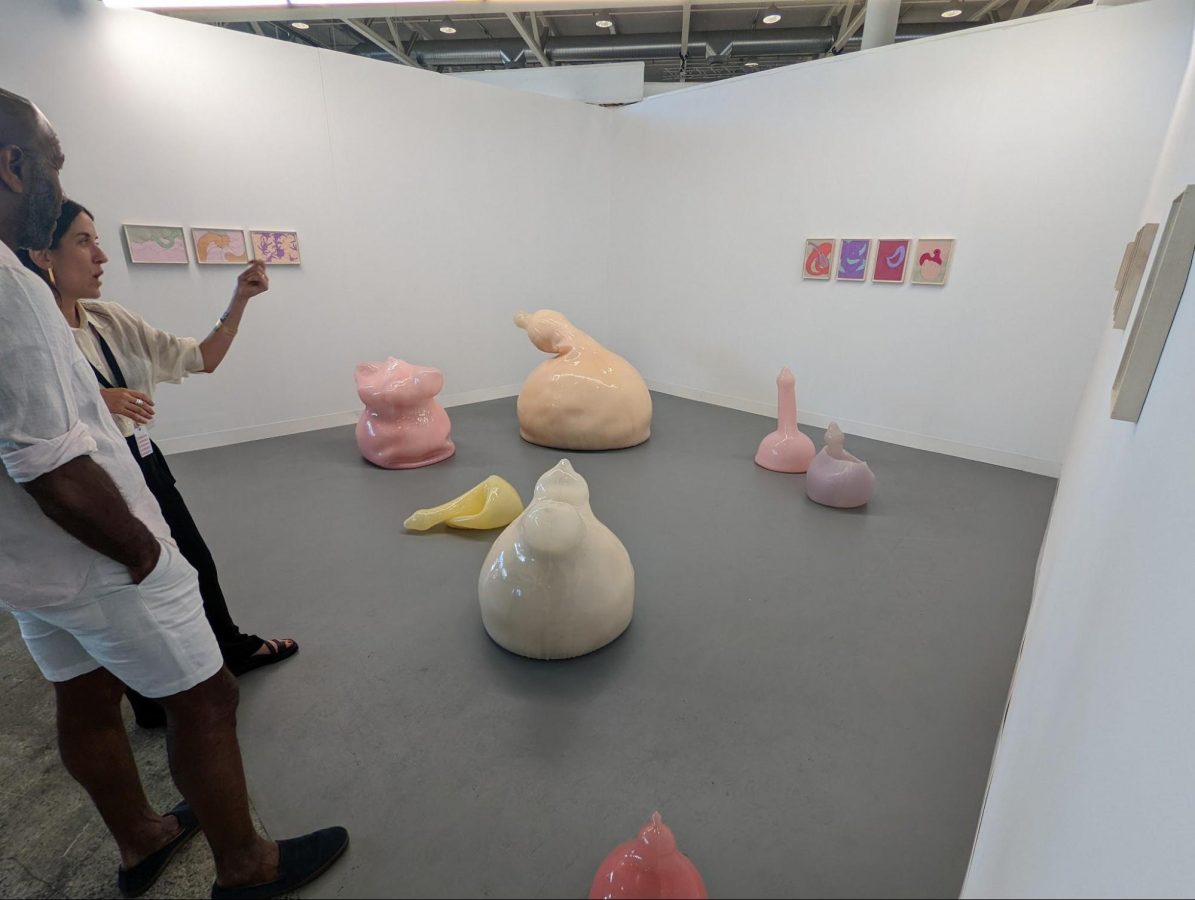Liste Art Fair, inaugurated back in 1996, is now older than many of the emerging Gen-Z artists showing in its galleries. And it still manages to feel young, fresh, and cutting-edge. As one of the first “satellite” art fairs to spring up with a more “alternative” offering in the orbit of an established, commercial art fair such as Basel, Liste has earned the respect and reputation of a somewhat-institution in its own right.
Even though the fair has moved from its longtime home (a former brewery with a post-industrial aesthetic) to the more, well, “conventional” convention center Messe Basel a few halls down from the main fair, it still feels a bit punk. An endearing illustration of the fair’s hip je ne sais quoi: at the preview Monday afternoon, there was a mini bicycle traffic jam as the fair’s VIP invitees arrived on two wheels and vied for spots to lock up bikes between other attendees in shorts sprawled on the sidewalk, enjoying beers and cigarettes in the sun. Contrast that scene with the typical art fair VIP opening, which usually involves a maddeningly inefficient parade of black car sedans and UberXL SUVs inching through a clogged porte-cochère to deposit attendees wearing impractical shoes as close to the entrance as possible.
If well-heeled art advisors and investors anxiously watch the sales at Art Basel to predict future tradewinds, curators and critics seem to be buzzing more about Liste—excited to see what their global peers’ zeitgeist is catalyzing in young galleries from Berlin to Beijing, Oaxaca to Oslo. Fair director Joanna Kamm has delivered a show exceeding that expectation, serving up a program that neither sacrifices diversity for the sake of cohesion nor vice versa.
So what’s on view/trending across the emerging art world hive-mind? Campy horror aesthetics referencing slasher films and Alien, respectively. A lot of charmingly faux-naive, playful techniques in traditional media such as painting and ceramics, as well as experimentation with unconventional materials and found objects. Abstract allusions to the body and associated anxieties coexist happily with more direct representation and environmental concerns.
With 82 galleries representing 37 countries, the surprisingly compact fair is dense with content. That makes it both hard to photograph and to pick favorites. Nevertheless, here are some highlights that exemplify the trends on view:
















